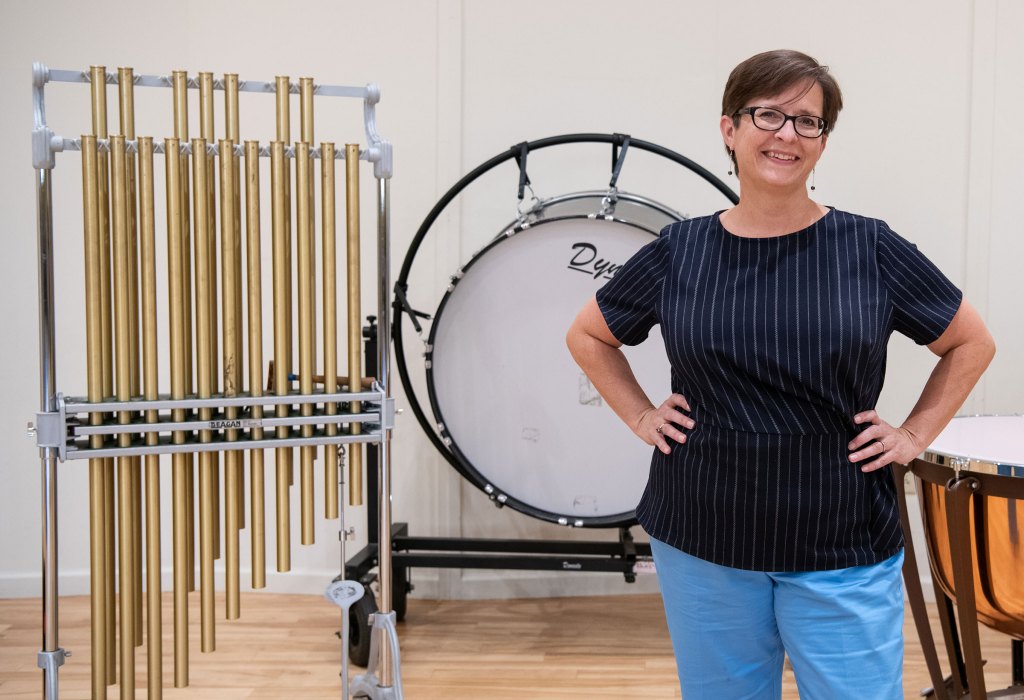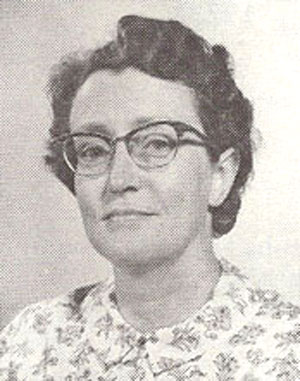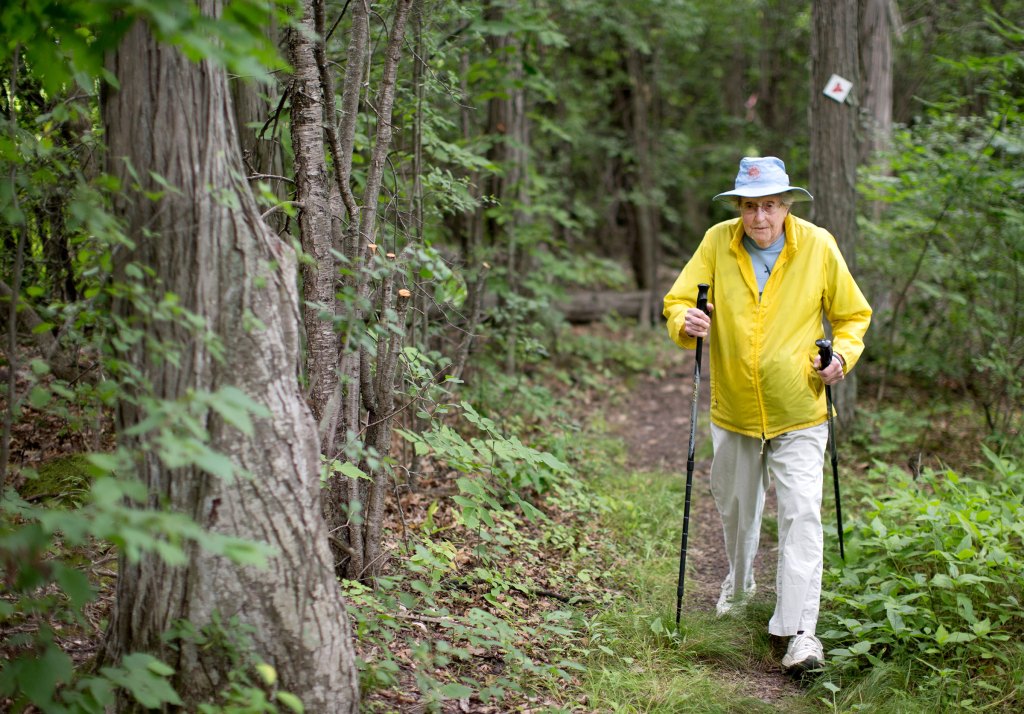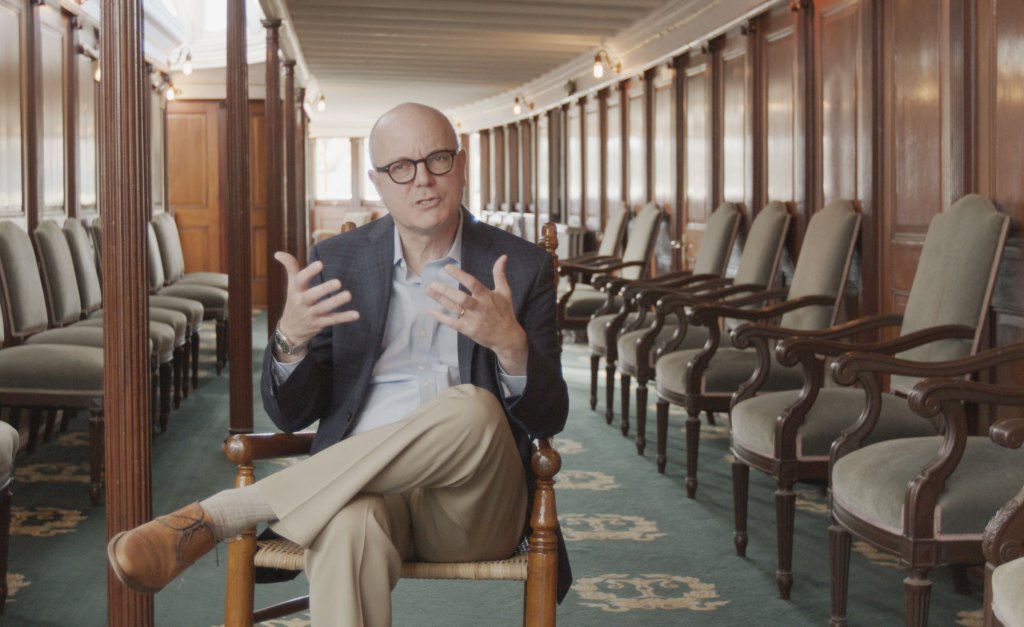In October of 2024, Elise Brunelle, Executive Director of the Vermont Symphony Orchestra (VSO), received a surprising letter. It informed her that a donor named Mary Hoffman left the VSO a substantial six-figure gift in her will. Hoffman, who died in July of 2024, was a regular supporter of the VSO and had been attending the concerts in the Classical Series since 2005, but Hoffman was a private person. Brunelle had no idea that she’d planned to give a posthumous gift.
Brunelle began speaking with other local nonprofits and quickly learned that the VSO was not the only organization impacted by Hoffman’s generosity. Six other Vermont institutions received letters just like hers: Shelburne Farms, Shelburne Museum, The Nature Conservancy, Vermont Land Trust, Wake Robin and the Vermont Community Foundation. It quickly became apparent that Hoffman’s legacy would have a meaningful impact across the state.

These organizations plan to recognize Hoffman’s gift with a reception celebrating her at the Shelburne Museum on October 7, 2025.
Hoffman was a philanthropist throughout her life, but these gifts were made possible by careful planning for the future. During her lifetime, she had a donor advised fund through the Vermont Community Foundation, a public charity that’s home to hundreds of funds and individual giving accounts created by Vermonters to serve charitable goals. Hoffman made grants that reflected her values through The White Heather Fund, named after her beloved sailboat. Hoffman’s advisor at the VCF, Emilye Pelow Corbett, also encouraged Hoffman to consider how planned giving could continue her legacy after her death, and Pelow Corbett put together a broader estate plan for the future.
“Planned giving allows you to support the causes that are really important to you,” said Pelow Corbett. “It can be an extension of the philanthropy you practice during your lifetime.” While she acknowledges that planning can feel intimidating at first, Pelow Corbett said the joyful part comes afterward — when fundholders feel the relief of having a plan in place and the satisfaction of knowing their giving will continue to make a difference. It’s a bit like wrapping a gift and tucking it away: you haven’t given it yet, but already you feel the joy of imagining how it will impact someone.”

Hoffman’s gift to the VSO helped supplement a grant from the National Endowment of the Arts. This year, that grant was rescinded after programming was already planned. Without Hoffman’s support, the VSO’s 2025 concerts would not have been possible.
Many Vermont nonprofits rely heavily on philanthropy and estate gifts to support their programming — especially right now, as federal funding for the arts continues to be reduced. “These contributions help us do the work that allows us to be a robust cultural state that has so much to offer,” Brunelle said.
‘She Would’ve Wanted to Inspire Others’
Though Vermont institutions benefited from Mary Hoffman’s philanthropy, she wasn’t a native Vermonter. Born in January 1927 in Kearny, New Jersey, Hoffman moved with her family to Cleveland, Ohio, where she went to high school and studied chemistry at what is now Case-Western Reserve University. In 1949, she began working as a quality engineer for General Electric and earned 17 patents over the course of her career.

In 2005, Hoffman moved from Ohio to Wake Robin, a life plan community in Shelburne. While she was there, she was heavily involved in several committees at the residence, including the Nature Committee, the Music Committee and the Middleton Fund, which decides how to spend money for programming there. She spearheaded Wake Robin’s recycling program and volunteered her time to speak with prospective residents and give tours of the property.
Shape Tomorrow,
Start Today
Support the causes closest to your heart through thoughtful estate planning. Whether you’re shaping a gift that will benefit generations to come or building a fund that supports our communities today, our team is here to help you leave an impact that truly reflects your values. Let’s have a conversation.
“Whenever I saw her, she always had a smile for me,” said MaryBeth Dudley, Director of Community Advancement at Wake Robin. “She was a focused and thoughtful person to be around, and she was always either in nature or talking about helping nature.”
Hoffman was involved with many projects during her time at Wake Robin, but one that Dudley remembers fondly was her effort to develop the community’s frog swale — a specially designed amphibian habitat. Hoffman was passionate about it. One of the walkways at Wake Robin crosses a stream, and Hoffman proposed that they turn it into a frog swale. Her committee began allocating resources and doubled its size. “Since then, residents have seen frogs there. Just the other day, I heard about people enjoying the activity seen in the swale,” Dudley said.
Pelow Corbett said she spoke with Hoffman often about nature and the environment when advising her fund. Hoffman lost her eyesight near the end of her life, but she remained passionate about going on walks. “When she was younger, she loved to go sailing,” Pelow Corbett said, noting that her fund is named for her sailboat. “Being on the water and being in nature was just so ingrained in her.”
When she died, Hoffman had no living family members. She hoped to leave a legacy behind by supporting organizations that shared her values. “She would’ve wanted to inspire others to do the same,” Pelow Corbett added.
The Impacts of Planned Giving

Sue Dixon, Special Gifts Officer at Shelburne Farms, has been on the development team there for 28 years. Over that period of time, she got to know Hoffman.
“She was so devoted to nature and education and Vermont,” Dixon said. From her conversations with Hoffman, she knew that Hoffman appreciated the programming that Shelburne Farms did locally for schoolchildren and the relationships they had with local educators. Hoffman made an annual gift to the farm, but Dixon was surprised to receive a letter from Hoffman’s lawyer with news of the planned gift, which will add to Shelburne Farms’ endowment.
“It will support all the things Mary loved about Shelburne Farms forever, like the trails, the food system and the educational work,” Dixon said.
About half of the farm’s budget comes from charitable donations, making these types of gifts integral to its operation. “It is amazing how expensive it is to maintain this place,” Dixon added.
Tom Denenberg, director at the Shelburne Museum, noted that Hoffman was an engaged member there as well. “She came to openings and always had opinions on the projects,” Denenberg recalled. He was very impressed with her past career as an engineer, especially during a time where there weren’t many women engineers, and valued her input.
The gift she left us with is substantial, but the nice thing about living in a small place like Vermont is you can do such big things with legacy giving like that. In a bigger community, it might get lost, but it’s going to make a real impact here.
Tom Denenberg, Shelburne Museum Director
“The gift she left us with is substantial, but the nice thing about living in a small place like Vermont is you can do such big things with legacy giving like that. In a bigger community, it might get lost, but it’s going to make a real impact here,” Denenberg said.
Most of the conversations he had with Hoffman pertained to the museum’s buildings, so he thinks that the Shelburne Museum will likely do something hands-on and tactile with her gift, either with renovating the buildings or doing garden maintenance. Hoffman’s bequest was unrestricted — all of the organizations are free to use the money where it is most needed.
“She didn’t know what challenges we would be facing when she passed and trusted us to determine where the needs are,” said Eve Frankel, the State Director of The Nature Conservancy in Vermont. Frankel said that she knew Hoffman was very interested in nature, and spent a lot of time at Raven Ridge Natural Area, which is owned and managed by the Nature Conservancy.
Hoffman’s donation will be applied to the organization’s conservation and climate action work, helping the Nature Conservancy meet its goal to conserve 30 percent of Vermont’s lands and waters by 2030.
Dixon added that it’s hard to put meaning on a gift, regardless of the amount. “Even just $2 from a child is meaningful to us,” she said.
Denenberg illustrated that point by taking a frame off of his wall that contained a note: ‘I really liked my visit to the Shelburne Museum, so I am making a donation. Sincerely, Ellen.’
“Ellen was a child who visited us, and she gave us a twenty-dollar bill,” said Denenberg. “No gift is too small. We’ll do good work with whatever it is.”
Planning For the Future
As a senior philanthropic advisor and the Director of Planned Giving at the Vermont Community Foundation, Pelow Corbett has conversations with fundholders every day about the future of their charitable giving. This includes philanthropy during your lifetime and through your estate plans. It can be made with cash or with non-cash assets such as retirement accounts, real estate, appreciated stock, or even business interests.
“My role is to ask a lot of open-ended questions to find out what you want to achieve,” Pelow Corbett explained. When she spoke with Hoffman, she found that she was really focused on community and wanted to choose organizations that were all about supporting people. Pelow Corbett didn’t know that the Vermont Community Foundation itself would receive a gift until after Hoffman’s passing. The gift will help the foundation make grants based on Hoffman’s areas of interest–the environment, culture, and health.
Pelow Corbett said a lot of folks choose the Vermont Community Foundation because they trust their money will stay in Vermont. “You don’t have to be a millionaire. You can give anything that you want, and it can really make an impact in our small state.”

